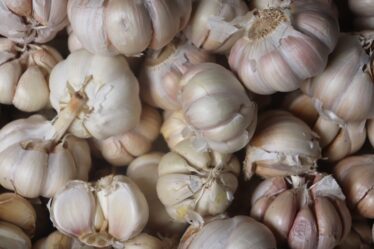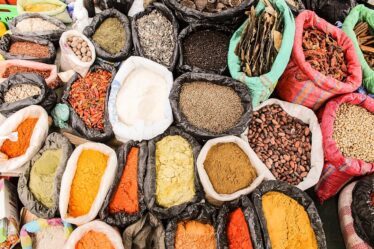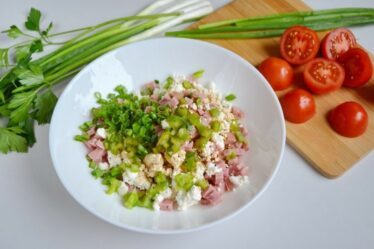
Dried lemon zest is a versatile ingredient that can add a burst of flavor to your cooking. It is made by removing the outer layer of the lemon peel and drying it until it becomes crispy and fragrant. This process intensifies the citrusy aroma and taste of the lemon zest, making it a popular choice for enhancing the flavor of various dishes. In this article, we will explore the benefits of using dried lemon zest in your cooking, how to make it at home, and different ways to incorporate it into your recipes.
Key Takeaways
- Dried lemon zest is made by removing the outer layer of a lemon and drying it out.
- Using dried lemon zest in cooking can add a burst of citrus flavor to your dishes.
- To store dried lemon zest for long-term use, keep it in an airtight container in a cool, dry place.
- Dried lemon zest can be used in baking, tea, salad dressings, marinades, and cocktails for added flavor.
- While fresh lemon zest may have a stronger flavor, dried lemon zest is more convenient and has a longer shelf life.
What is Dried Lemon Zest and How to Make It?
Dried lemon zest refers to the outer layer of the lemon peel that has been dried and turned into a powder or flakes. It is commonly used as a seasoning or flavoring agent in cooking and baking. The process of making dried lemon zest is simple and can be done at home.
To make dried lemon zest, start by washing the lemons thoroughly to remove any dirt or residue. Then, use a zester or a grater to remove the outer layer of the lemon peel, being careful not to include any of the bitter white pith. Once you have grated all the lemons, spread the zest out on a baking sheet lined with parchment paper and let it dry in a cool, dry place for about 24-48 hours, or until it becomes crispy. Finally, use a blender or a mortar and pestle to grind the dried lemon zest into a fine powder or leave it as flakes, depending on your preference.
The Benefits of Using Dried Lemon Zest in Your Cooking
Dried lemon zest not only adds a burst of flavor to your dishes but also offers several health benefits. Lemon zest is rich in antioxidants, which help protect your cells from damage caused by free radicals. It is also a good source of vitamin C, which boosts your immune system and promotes collagen production for healthy skin. Additionally, lemon zest contains essential oils that have antimicrobial properties, making it a natural remedy for fighting off bacteria and viruses.
In terms of flavor, dried lemon zest can enhance the taste of your dishes in various ways. It adds a bright and tangy citrus flavor that complements both sweet and savory dishes. The intense aroma of dried lemon zest can uplift the overall taste of your recipes, making them more vibrant and refreshing. Whether you are making a lemon-infused pasta sauce, a zesty salad dressing, or a citrusy dessert, dried lemon zest can take your dishes to the next level.
How to Store Dried Lemon Zest for Long-Term Use
| Method | Duration | Storage |
|---|---|---|
| Freezing | Indefinitely | Airtight container in freezer |
| Vacuum Sealing | Up to 2 years | Vacuum sealed bag in pantry or freezer |
| Dehydrating | Up to 6 months | Airtight container in pantry |
| Sugar Preserving | Up to 1 year | Airtight container in pantry |
To ensure the longevity of your dried lemon zest, it is important to store it properly. The best way to store dried lemon zest is in an airtight container, such as a glass jar or a resealable bag. Make sure to remove as much air as possible before sealing the container to prevent moisture from getting in.
It is also recommended to store dried lemon zest in a cool, dark place, away from direct sunlight and heat sources. Exposure to light and heat can cause the flavor and aroma of the zest to deteriorate over time. If stored correctly, dried lemon zest can last for up to six months or even longer without losing its potency.
5 Delicious Ways to Use Dried Lemon Zest in Your Recipes
1. Lemon Zest Pasta: Add a teaspoon or two of dried lemon zest to your favorite pasta sauce for a burst of citrusy flavor. The lemon zest will brighten up the dish and add a refreshing twist.
2. Lemon Zest Roasted Vegetables: Toss your favorite vegetables with olive oil, salt, pepper, and a sprinkle of dried lemon zest before roasting them in the oven. The lemon zest will add a zesty kick to the vegetables and elevate their natural flavors.
3. Lemon Zest Yogurt: Mix a teaspoon of dried lemon zest into plain yogurt for a tangy and refreshing snack. You can also add some honey or maple syrup for a touch of sweetness.
4. Lemon Zest Baked Goods: Incorporate dried lemon zest into your favorite baked goods, such as cookies, cakes, and muffins. The lemon zest will add a bright and citrusy flavor to the treats.
5. Lemon Zest Salad Dressing: Whisk together olive oil, lemon juice, dried lemon zest, honey, Dijon mustard, salt, and pepper to make a zesty salad dressing. Drizzle it over your favorite greens for a refreshing and flavorful salad.
Dried Lemon Zest vs Fresh Lemon Zest: Which is Better?

Both dried lemon zest and fresh lemon zest have their own unique qualities and can be used in different ways in cooking. Fresh lemon zest has a more vibrant and intense flavor compared to dried lemon zest. It adds a bright and citrusy taste to dishes and is often used as a finishing touch to add a burst of freshness.
On the other hand, dried lemon zest has a more concentrated flavor due to the removal of moisture during the drying process. It can be used as a seasoning or flavoring agent in various recipes, providing a consistent and long-lasting citrusy taste. Dried lemon zest is also more convenient to use as it can be stored for longer periods without losing its potency.
The choice between dried and fresh lemon zest ultimately depends on the specific recipe and personal preference. Fresh lemon zest is ideal for recipes that require a burst of freshness, such as salads or seafood dishes. Dried lemon zest, on the other hand, is perfect for recipes that need a more intense and long-lasting citrus flavor, such as marinades or baked goods.
How Dried Lemon Zest Can Add Flavor to Your Baking
Dried lemon zest is a game-changer when it comes to baking. It adds a bright and citrusy flavor to your baked goods, making them more vibrant and refreshing. Whether you are making cookies, cakes, or muffins, dried lemon zest can take your baking to the next level.
To incorporate dried lemon zest into your baking, simply add it to the dry ingredients of your recipe. For example, if you are making lemon cookies, mix the dried lemon zest with the flour, baking powder, and salt before adding it to the wet ingredients. This ensures that the lemon flavor is evenly distributed throughout the dough.
Here are a few recipes that use dried lemon zest in baking:
1. Lemon Poppy Seed Muffins: Combine flour, sugar, baking powder, salt, dried lemon zest, poppy seeds, milk, vegetable oil, eggs, and vanilla extract in a bowl. Mix until well combined and bake in a preheated oven until golden brown.
2. Lemon Bars: Make a shortbread crust by combining flour, sugar, butter, and dried lemon zest. Press the mixture into a baking dish and bake until golden brown. In a separate bowl, whisk together eggs, sugar, flour, lemon juice, and dried lemon zest. Pour the mixture over the crust and bake until set.
3. Lemon Pound Cake: Cream together butter and sugar until light and fluffy. Add eggs one at a time, beating well after each addition. In a separate bowl, whisk together flour, baking powder, salt, and dried lemon zest. Gradually add the dry ingredients to the butter mixture alternately with milk. Pour the batter into a greased loaf pan and bake until a toothpick inserted into the center comes out clean.
The Secret to Making Perfect Lemon Tea with Dried Lemon Zest
Lemon tea is a refreshing and soothing beverage that can be enjoyed hot or cold. Adding dried lemon zest to your tea can enhance its flavor and provide a burst of citrusy goodness. Here’s how to make the perfect lemon tea with dried lemon zest:
1. Bring a pot of water to a boil. For every cup of water, add a teaspoon of dried lemon zest to a tea infuser or a tea bag.
2. Place the tea infuser or tea bag in the pot of boiling water and let it steep for about 5 minutes, or until the desired strength is achieved.
3. Remove the tea infuser or tea bag and pour the lemon tea into cups. You can sweeten it with honey or sugar if desired.
4. Serve the lemon tea hot or let it cool down and refrigerate for a refreshing iced tea.
Tips for achieving the perfect flavor:
– Use high-quality dried lemon zest for the best flavor. The zest should be fragrant and vibrant in color.
– Adjust the amount of dried lemon zest according to your taste preferences. If you prefer a stronger lemon flavor, add more zest.
– Experiment with different types of tea, such as green tea or herbal tea, to create unique flavor combinations.
– Squeeze some fresh lemon juice into the tea for an extra tangy kick.
Adding Dried Lemon Zest to Your Salad Dressings for Extra Flavor
Salad dressings are a great way to incorporate dried lemon zest into your cooking. The bright and citrusy flavor of dried lemon zest can elevate the taste of your salads and make them more refreshing. Here’s how to make salad dressings with dried lemon zest:
1. Lemon Vinaigrette: In a small bowl, whisk together olive oil, lemon juice, dried lemon zest, Dijon mustard, honey, salt, and pepper until well combined. Drizzle the dressing over your favorite greens and toss to coat.
2. Creamy Lemon Dressing: In a blender or food processor, combine Greek yogurt, lemon juice, dried lemon zest, garlic, salt, and pepper. Blend until smooth and creamy. Pour the dressing over your salad and mix well.
3. Lemon Herb Dressing: In a jar with a tight-fitting lid, combine olive oil, lemon juice, dried lemon zest, minced garlic, chopped fresh herbs (such as parsley, basil, or dill), salt, and pepper. Shake the jar vigorously until the ingredients are well combined. Drizzle the dressing over your salad and toss to coat.
These dressings can be stored in the refrigerator for up to a week. Just give them a good shake before using to recombine the ingredients.
Dried Lemon Zest in Marinades: A Game-Changer for Your Grilling Recipes
Marinades are a great way to infuse flavor into your meats and vegetables before grilling. Adding dried lemon zest to your marinades can provide a bright and citrusy taste that complements a wide range of ingredients. Here’s how to use dried lemon zest in marinades:
1. Lemon Garlic Marinade: In a bowl, whisk together olive oil, lemon juice, dried lemon zest, minced garlic, salt, pepper, and your choice of herbs (such as thyme or rosemary). Place your meat or vegetables in a resealable bag or a shallow dish and pour the marinade over them. Let them marinate in the refrigerator for at least 30 minutes or up to overnight before grilling.
2. Lemon Herb Marinade: In a blender or food processor, combine olive oil, lemon juice, dried lemon zest, minced garlic, chopped fresh herbs (such as parsley, basil, or oregano), salt, and pepper. Blend until well combined. Place your meat or vegetables in a resealable bag or a shallow dish and pour the marinade over them. Let them marinate in the refrigerator for at least 30 minutes or up to overnight before grilling.
3. Lemon Teriyaki Marinade: In a bowl, whisk together soy sauce, lemon juice, dried lemon zest, honey, minced garlic, grated ginger, and sesame oil. Place your meat or vegetables in a resealable bag or a shallow dish and pour the marinade over them. Let them marinate in the refrigerator for at least 30 minutes or up to overnight before grilling.
These marinades can be used for a variety of proteins and vegetables. The dried lemon zest adds a tangy and refreshing flavor that pairs well with grilled dishes.
Experimenting with Dried Lemon Zest in Your Cocktails and Mocktails
Dried lemon zest can also be used to add a citrusy twist to your cocktails and mocktails. Its intense flavor and aroma can elevate the taste of your drinks and make them more refreshing. Here’s how to use dried lemon zest in cocktails and mocktails:
1. Lemon Martini: In a cocktail shaker, combine vodka, triple sec, lemon juice, simple syrup, and a pinch of dried lemon zest. Shake well and strain into a chilled martini glass. Garnish with a lemon twist.
2. Lemon Mojito: In a glass, muddle fresh mint leaves with sugar and dried lemon zest until fragrant. Add rum, lemon juice, club soda, and ice. Stir well and garnish with a sprig of mint and a slice of lemon.
3. Lemonade Spritzer: In a glass, combine lemonade, sparkling water, a squeeze of fresh lemon juice, and a sprinkle of dried lemon zest. Stir well and garnish with a slice of lemon.
These are just a few examples of how you can incorporate dried lemon zest into your drinks. Feel free to experiment with different combinations of flavors and ingredients to create your own unique cocktails and mocktails.
Dried lemon zest is a versatile ingredient that can enhance the flavor of your dishes in various ways. Whether you are baking, cooking, or making drinks, dried lemon zest can add a bright and citrusy twist to your recipes. It offers several health benefits and can be easily made at home. By properly storing dried lemon zest, you can enjoy its flavor and aroma for an extended period of time. So why not give dried lemon zest a try in your next culinary adventure? You might just discover a new favorite ingredient that will elevate your cooking to new heights.
If you’re a fan of dried lemon zest, you’ll love this article on Flavorful Sips that explores the art of fruit cocktails. From classic recipes to innovative twists, “Mastering the Art of Fruit Cocktails” is a comprehensive guide for mixologists and home bartenders alike. Discover how to incorporate dried lemon zest into refreshing drinks that will impress your guests and elevate your cocktail game. Check out the article here and get ready to shake up some citrus-infused libations!



